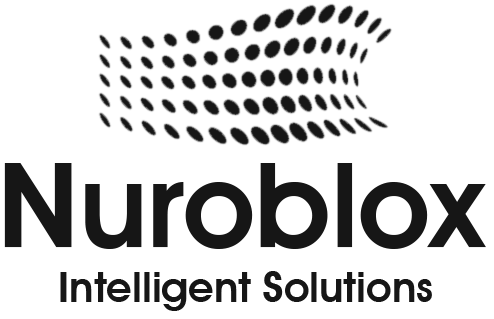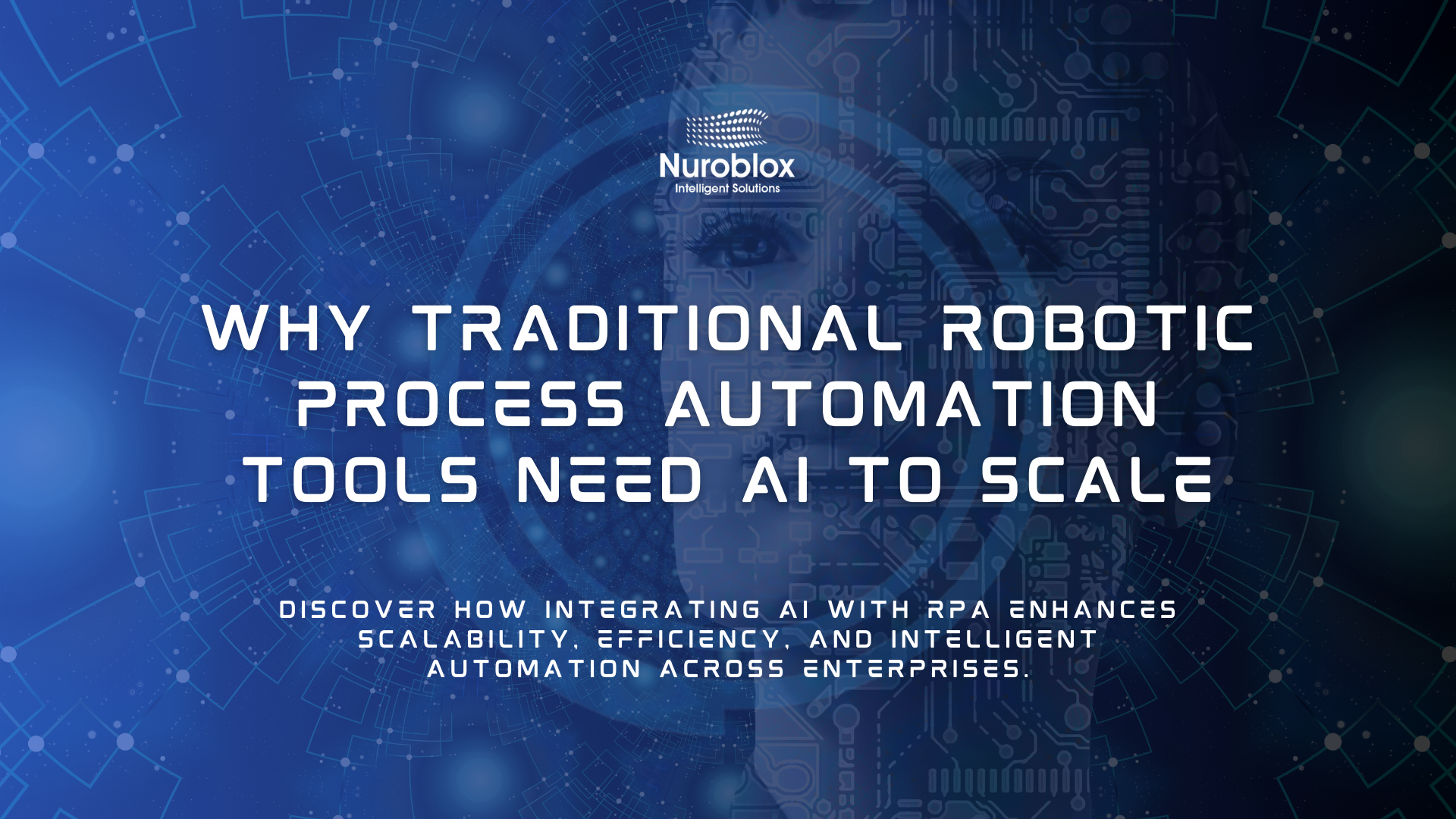Why Traditional Robotic Process Automation Tools Need AI to Scale
Robotic Process Automation (RPA) arrived with a powerful promise – to liberate human workers from the drudgery of repetitive, rules-based digital tasks. For years, it has delivered, automating everything from data entry to report generation with tireless precision. However, many organizations that eagerly adopted RPA are now hitting a frustratingly solid wall. A recent survey revealed that a staggering 73% of executives are already looking beyond traditional RPA toward the next frontier – intelligent automation. This isn’t a mere trend; it’s a strategic necessity. While RPA excels at mimicking human actions, it lacks the cognitive capabilities to scale effectively across the complex, dynamic, and data-rich landscape of the modern enterprise.
The inherent limitations of traditional RPA, its dependency on structured data, its brittleness in the face of system changes, and its inability to handle nuanced decisions cap its potential. It can optimize a task, but it struggles to transform an end-to-end process. To break through this glass ceiling, RPA needs a brain. By integrating Artificial Intelligence (AI), organizations can elevate their automation initiatives from simple task execution to intelligent process orchestration. This article, intended for business leaders and IT professionals, breaks down why AI is no longer an optional add-on for RPA but a core requirement for achieving true, enterprise-wide scale, resilience, and competitive advantage. We will explore the inherent weaknesses of traditional RPA and demonstrate how AI-powered intelligent automation is the definitive solution to unlock its full transformative power.
The Glass Ceiling of Traditional RPA
Traditional RPA operates on a simple, powerful principle – bots follow pre-programmed scripts to interact with digital systems just as a human would. They click, copy, paste, and input data based on a strict set of rules. This approach delivers significant efficiency gains for highly predictable, high-volume tasks. However, this same rule-based rigidity becomes its primary weakness when faced with the complexities of real-world business processes.
The Inability to Handle Unstructured Data
RPA bots demand structured, predictable data. They are trained to find information in specific fields and execute actions based on that input. The moment data deviates from this expected format a common occurrence in business the bot fails, creating an exception that requires human intervention. This is a critical bottleneck, as the vast majority of enterprise data is unstructured, including emails, PDFs, scanned images, and customer correspondence. An RPA bot programmed to process a standardized invoice will falter if it encounters a new layout or a handwritten note, forcing the process back into manual workflows.
The Brittleness of UI-Based Automation
Most traditional RPA bots interact with applications through the user interface (UI), essentially “scraping” the screen to find buttons and fields. This method is inherently fragile. A minor update to an application’s UI repositioning a button, changing a field name, or altering a color can break the bot’s script, grinding the automated process to a halt. This dependency leads to constant, costly maintenance and reconfiguration, draining IT resources and undermining the ROI of the automation program.
The Struggle with Complex Decision-Making
RPA follows logic; it does not possess judgment. Bots can execute complex if-then-else scenarios, but they cannot make decisions that require context, inference, or interpretation. For example, an RPA bot can process an insurance claim that meets all predefined criteria, but it cannot assess a claim with missing information or determine the sentiment of an attached customer complaint letter. This limitation confines RPA to the simplest segments of a workflow, leaving the more complex, value-added decisions to human employees and preventing true end-to-end automation.
The Failure to Scale Beyond Isolated Tasks
Perhaps the most significant limitation is that traditional RPA automates tasks, not processes. While optimizing individual activities can create pockets of efficiency, it often fails to deliver broad, transformational change. Automating invoice data entry is useful, but it doesn’t address the entire procure-to-pay lifecycle, which involves vendor communication, exception handling, and payment authorization. According to Forbes, this task-level focus is an inherent RPA limitation that prevents it from meeting organization-wide digital transformation goals, causing many RPA initiatives to remain isolated and fail to scale.
Enter Intelligent Automation – The Fusion of RPA and AI
Intelligent Automation (IA), sometimes called Hyperautomation, represents the evolution of RPA. It enhances the “doing” capabilities of RPA with the “thinking” and “learning” capabilities of AI [, ]. By infusing RPA with AI technologies, organizations can create a far more powerful and versatile workforce of digital assistants capable of tackling the challenges that cripple traditional bots.
Machine Learning (ML) – From Static Rules to Dynamic Learning
Machine Learning gives RPA bots the ability to learn from data and improve over time without being explicitly reprogrammed. Instead of relying on rigid rules, ML models can identify patterns, detect anomalies, and make probabilistic decisions.
- Use Case – In fraud detection, an ML-powered bot can analyze thousands of transactions, learn what normal activity looks like, and flag suspicious patterns in real-time, a task far beyond the scope of a rule-based system. Similarly, in manufacturing, ML can predict equipment failure based on sensor data, allowing an RPA bot to automatically schedule maintenance before a breakdown occurs.
Natural Language Processing (NLP) – Understanding the Language of Business
Natural Language Processing allows bots to understand, interpret, and even generate human language. This bridges the gap between unstructured communication and automated processes. With NLP, bots can read emails, extract intent from customer service tickets, interpret contracts, and engage in conversational interactions through chatbots.
- Use Case – An insurance company can deploy an IA bot that reads incoming email claims, uses NLP to understand the customer’s request and sentiment, extracts relevant data from the email body and attachments, and automatically initiates the claims process, routing complex cases to the appropriate human agent.
Computer Vision – Giving ‘Eyes’ to Your Bots
AI-powered computer vision enables bots to “see” and interpret visual information from documents, images, and screens. This is a massive leap beyond traditional Optical Character Recognition (OCR), which simply converts images of text into machine-readable text. Intelligent Document Processing (IDP), powered by computer vision, can understand the context and layout of a document, accurately extracting data from semi-structured or unstructured formats like invoices, bills of lading, and handwritten forms, regardless of their format.
- Use Case – A logistics firm successfully used AI-powered bots with IDP to analyze bills of lading, invoices, and shipment documents. This reduced processing time by 60% by eliminating the manual effort required to handle document variations.

The synergy of RPA and AI does more than just patch the weaknesses of traditional automation; it creates a platform for profound business transformation. The benefits extend far beyond incremental efficiency gains, enabling true scalability, resilience, and value creation.
Achieving True End-to-End Process Automation
By handling unstructured data and making intelligent decisions, IA empowers organizations to automate entire, complex workflows from start to finish. Processes like order-to-cash, which involve customer communications, order validation, inventory checks, invoicing, and payment reconciliation, can be fully orchestrated by intelligent bots. This holistic approach connects previously siloed tasks, eliminates bottlenecks, and creates a seamless, efficient operational flow.
Drastic Reduction in Operational Costs and Errors
Intelligent automation drastically reduces the number of exceptions that require costly human intervention. By learning to handle variations and making smarter decisions, AI-powered bots achieve a much higher straight-through processing rate. This not only lowers labor costs but also minimizes the risk of human error in complex processes, leading to improved data accuracy, compliance, and risk management.
Enhanced Scalability and Resilience
AI makes automation infrastructure more robust and adaptable. Where traditional bots break with UI changes, AI-powered bots can adapt to new interfaces. Cloud-native RPA platforms further enhance this scalability, allowing organizations to deploy and manage thousands of bots across the enterprise with flexibility and reduced upfront investment [, ]. A Forrester report predicts that by 2025, over 60% of RPA deployments will be cloud-native, a testament to the need for agile and scalable automation.
Unlocking New Revenue and Customer Experience Opportunities
Intelligent automation is not just a cost-cutting tool; it’s a value driver. By automating complex, customer-facing processes, businesses can deliver faster, more accurate, and more personalized service. For example, in healthcare, IA can automate patient intake, insurance verification, and claims processing, significantly reducing wait times and administrative friction, thereby improving the patient experience.
A Strategic Roadmap for Scaling with AI
Transitioning from traditional RPA to intelligent automation requires more than just new technology; it demands a strategic shift in mindset and approach.
- Establish a Strong Governance Foundation – Scaling automation requires centralized oversight. A Center of Excellence (CoE) is crucial for setting standards, managing the automation pipeline, ensuring security and compliance, and promoting best practices across the organization.
- Prioritize for Strategic Value – Move beyond automating simple, isolated tasks. Use process mining and other analytics tools to identify complex, end-to-end processes where intelligent automation can deliver the highest strategic impact and ROI.
- Embrace a Culture of Hyperautomation – Foster a mindset where automation is a core business strategy, not just an IT project. Hyperautomation is about combining RPA, AI, analytics, and other tools to automate everything that can and should be automated, empowering employees to focus on innovation and high-value work.
- Invest in Change Management – Successful scaling depends on people. Communicate the vision for intelligent automation clearly, and invest in upskilling and reskilling programs to prepare employees to work alongside their new “digital coworkers.” Address fears and resistance by framing automation as a tool for empowerment, not replacement.
The era of simple, rule-based automation is drawing to a close. While traditional RPA provided the initial spark, its limitations have become a barrier to the profound transformation that automation promises. The fusion of RPA with AI is the engine that will drive the next wave of productivity and innovation, enabling systems that don’t just execute tasks but also learn, adapt, and reason. The question for leaders is no longer if they should integrate AI with their RPA initiatives, but how quickly they can build an intelligent automation strategy to stay competitive. Which of your core business processes are currently stalled by the limitations of rule-based automation, and how could intelligent automation unlock their full potential?


